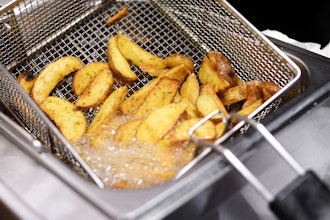
 Tom Katen, Technical Service Representative, Cargill
Tom Katen, Technical Service Representative, CargillDemand for lean protein is on the rise, as are meat block prices. Given that convergence of trends, it’s no wonder meat processors are taking a second look at their meat extension options.
Most often, meat processors incorporate a form of textured soy protein into their meat block. These products can provide meat-like texture, mouthfeel and visual appearance, while dramatically reducing formulation costs, boosting yield and, in many applications, improving performance. They come in a wide array of forms, sizes, shapes and colors, but choose wisely. Use the wrong one, and it could prove costly.
Choosing the Right Soy Protein
Two of the most common soy meat extenders — textured soy flour and textured soy concentrate — are often confused. Textured soy flour includes the sugars and dietary fiber naturally contained in the soybean, while textured soy concentrate does not. That distinction has little effect on the functionality or appearance of the two products, but can represent a significant difference to the bottom line. Textured soy flour is usually half the cost of concentrate. For a meat processor producing 50 million pounds of 30 percent soy-extended meat annually, switching to textured soy flour could translate into a saving of $1.875 million.
Get beyond the cost savings, however, and you’ll find few differences in the two products. Both benefit from the same advances in extrusion technology. The biggest leap forward — twin screw extrusion — dramatically reduces the amount of friction and heat in the production process, resulting in a more uniform product. It requires a multi-million dollar investment by ingredient suppliers, but for those committed to quality, the resulting flakes and minced pieces offer far greater uniformity in size, shape and color. That consistency is especially important in meat applications, where particle size, color and shape play a major role in hydration.
Functional soy proteins can form strong gels and have high water-binding capacity. In meat applications, textured soy products help retain moisture, resulting in a juicier, more desirable end product. Meat tends to release its water, but textured soy protein can hold six times its weight in water. This water-binding capacity is a benefit for a range of applications, from meat patties to egg rolls. Similarly, in kettle-cooked products like chili, textured soy protein can absorb the melted fat, improving product appearance and customer appeal. Textured soy protein even offers nutritional benefits, resulting in leaner meats with higher protein levels.
Textured soy flour holds one additional edge over its more expensive counterpart. In sensory panel testing, products made with textured soy flour consistently score higher in flavor and overall liking, as compared to those made with textured soy concentrate. The difference in preferences likely comes from the presence of natural soybean sugars which remain in the textured soy flour products.
These same sugars explain why textured soy flour has a lower protein level than concentrate. Where textured soy flour has a minimum 50 percent protein, textured soy concentrate has a minimum 65 percent. However, moving to textured soy flour decreases the overall protein level of the final product by a small amount, often as little as 1 percent or less.
 Cargill
CargillSelecting Particle Size
Regardless of the textured soy protein option used, one size definitely doesn’t fit all. Matching the right size, shape and color to the meat application is critical. Minced pieces work best in applications like chili, pizza toppings and taco filling, where particle definition is important. Flaked particles are best for patties, nuggets and Salisbury steak. The determining factor is how the product is cooked. Flakes hydrate faster in cold water, but are torn apart in high heat or long cooking processes. Minced forms require longer hydration and are typically used in retort and high-heat applications.
Color determinations turn on the same question. Caramel color is available, but is best used in pre-cooked beef products such as Salisbury steak or pizza toppings. Plain-colored textured soy protein mimics the fat pieces in raw red meat, and blends well in both cooked and raw white meat products.
Textured soy protein products offer meat processors myriad benefits, from yield increases and cost management to functional and nutritional benefits. While textured soy flour and concentrate have many similarities, meat processors should understand the key differences in consumer preferences and affordability. Today’s consumers want high-quality, leaner meat products — at an affordable price. The right textured soy protein can help meat processors meet those expectations.























